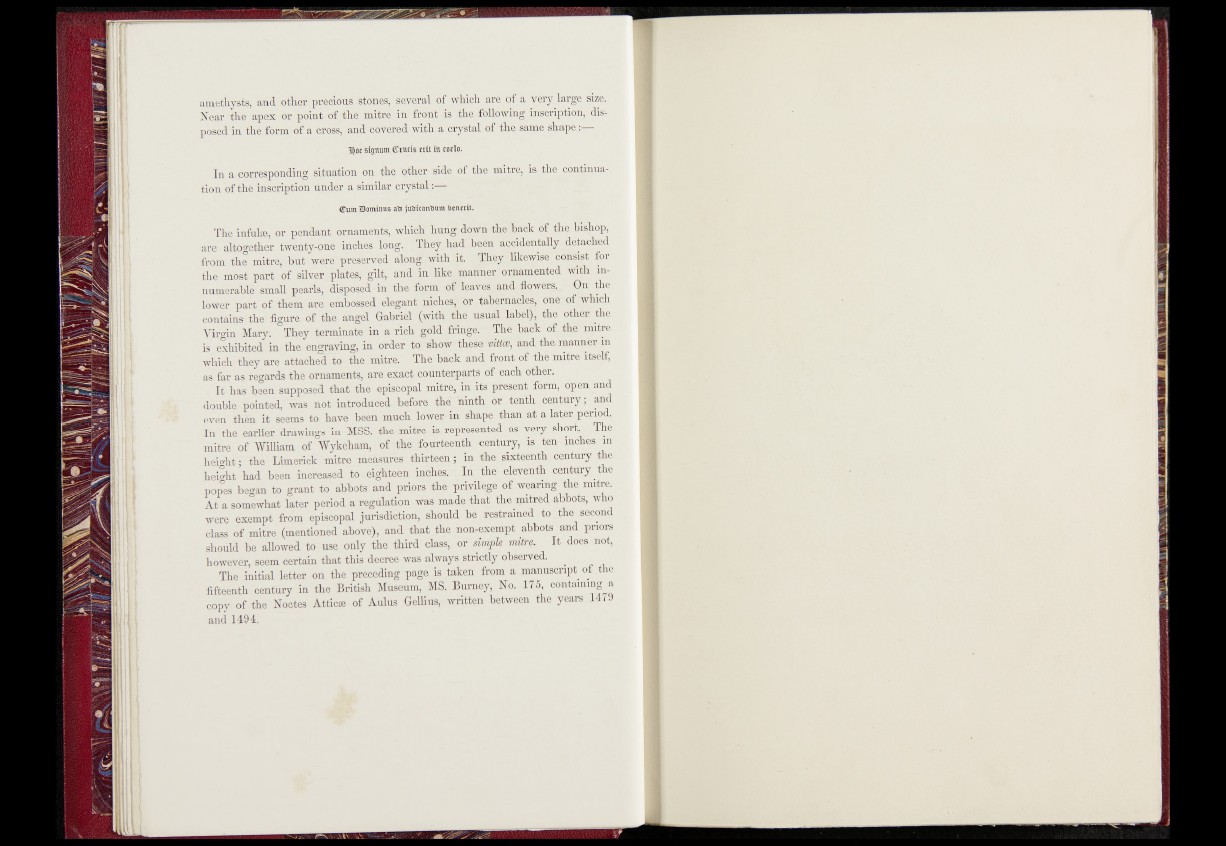
amethysts, and other precious stones, several of which are of a very large size.
Near the apex or point of the mitre in front-is the following inscription,, disposed
in the form of a cross, and covered with a crystal of the same shape:
3Sjoc signuw fflfotia «tit to toeio.
In a. corresponding situation on the "other side of tbn mitre, is the continua-.
tion of the inscription under a similar crystal
ffum Bomtnus att jutrtcantium benetit.
The infulse, or pendant ornaments,!which hung down the back pf th f bishop,
are altogether twenty-one inches long. They had been apcidentaUy^detached
from the mitre, but were Reserved along, with it. T h e y ih k ew consist for
the most part of silver-plates, gilt, and in like manner ornamented with innumerable
small pearls, disposed-in the form of leaves and flowers,.. On the
lower part of them are embossed elegant niches^ or tabernacles, onei^pf "which
contains'the figure of the angel“ Gabriel (with the usual label),-the often the
Virgin Mary. They terminate in a rich gold fringe. The hack of the’ ipitre
is exhibited in the engraving, in order to show these' mttce, and the.manner, ip
which they are attached to the mitre.' The back and front of the mitre itself,
as far as regards the ornaments, are exact'counterparts of each.'flft^h/ -
. It has been supposed that the episcopal mitre, in its present form, and
double pointed, was not introduced, before the ninth or |iebft century; and
even then it seems to have been much lower-in shape than at a later. period,
In the earlier drawings in MSS. the mitre is represented as .very {short, ghe;,
mitre of William of Wykeham, of the fourteenth ^century, is ten inches m
height; the Limerick mitre measures thirteen; in-the sixteenth dentury the
height had been increased to eighteen inches. - Inpbe eleventh .century the
popes began to grant to abbots and priors the privilege of wearing the mitre.
At a somewhat later period a regulation was made that the sgdtred abbots, who
were exempt from episcopal jurisdiction, should, be restrained to M second
class of mitre (mentioned above), and that,the non-exempt abbots and priors
l should be allowed to use only the third class, or simple mitre. It does/not^,
however, seem certain that this decree was always:striotly observed. I
The initial letter on the preceding page is taken from a manuscript of the
fifteenth century in the British Museum, MS. Burney, No. 175, containing a
copy of the Noctes Atticse of Aulus GelHusr written between the years 1479
and 1494.